The top 10 film/TV title sequences of 2014
From the excellent Art of the Title (which had a great year), the top 10 title sequences of 2014. So awesome to see Halt and Catch Fire take the top spot. And Too Many Cooks!



This site is made possible by member support. 💞
Big thanks to Arcustech for hosting the site and offering amazing tech support.
When you buy through links on kottke.org, I may earn an affiliate commission. Thanks for supporting the site!
kottke.org. home of fine hypertext products since 1998.
From the excellent Art of the Title (which had a great year), the top 10 title sequences of 2014. So awesome to see Halt and Catch Fire take the top spot. And Too Many Cooks!
Wonderful piece on Laura Hillenbrand, author of Seabiscuit and Unbroken. Hillenbrand has suffered from chronic fatigue syndrome for more than 25 years and can barely leave her own house, but she has turned her illness into an advantage in some ways.
Somehow, through the dizziness and disorientation, Hillenbrand has managed to produce two of the most critically and commercially successful nonfiction books in recent decades. “Seabiscuit” and “Unbroken” have together sold more than 10 million copies, and the hardcover edition of “Unbroken” remained on The Times’s best-seller list for 185 continuous weeks, which by some accounts is the fourth-longest reign of all time. In fact, the hardcover was so successful that Hillenbrand’s publisher, Random House, waited nearly four years before releasing a paperback edition this summer; since then, the paperback has held the top position on The Times’s list every week except one. Sallye Leventhal, the book buyer for history and politics at Barnes & Noble, told me that Hillenbrand’s commercial success is unparalleled. “There are other phenomenal best sellers, but not this phenomenal,” she said. “Not with this velocity, year after year after year.”
What’s startling to consider is that Hillenbrand has done this with little access to the outside world. She is cut off not only from basic tools of reporting, like going places and seeing things, but also from all the promotional machinery of modern book selling. Because of the illness, she is forced to remain as secluded from the public as the great hermetic novelists. She cannot attend literary festivals, deliver bookstore readings or give library talks and signings. Even the physical act of writing can occasionally stymie her, as the room spins and her brain swims to find words in a cognitive haze. There have been weeks and months — indeed, sometimes years — when the mere effort to lift her hands and write has been all that she can muster. “In the middle of working on ‘Unbroken,’” she told me, “I went just off a cliff and became very suddenly totally bedridden — I didn’t get out of the house for two years.” To function as an author, Hillenbrand has been forced to develop a unique creative process. Everything in her working life is organized around the illness: the way she reads, the way she thinks about language, even the way she describes familiar places. When Hillenbrand writes about the “rough, rasping tremor” of the Pacific and the “smoky brown oval” of Pimlico, her readers feel closer to the ocean and the racetrack than Hillenbrand is ever likely to be again.
After you read that, check out Hillenbrand’s piece on her illness written for the New Yorker in 2003.
You’ve probably seen many of these images pop up on FB and Twitter this year. And they are amazing! But actually totally fake!

No, this isn’t a solar eclipse as seen from the International Space Station.
Space photo researcher @FakeAstropix keeps debunking this one, but it keeps popping up in every corner of the internet. Which is why it’s earned our top spot today. It’s actually a rendering from DeviantArt user A4size-ska. Beautiful, but totally fake.
Does “even if it’s fake it’s real” apply here? (via @john_overholt)
Quora is giving their best writers an interesting care package: an anthology of the site’s best writing from 2014.

But why isn’t this an actual book that you can buy in stores, etc.? Seems like a great way to introduce the non-SV part of the world to Quora. (via @pieratt)
Software developer and free software advocate Richard Stallman lists several reasons why using Uber is not a good idea. Stallman is definitely a hardliner1, but I agree with several of his points here. (via hacker news)
Indeed, all iOS and Android apps run afoul of some of Stallman’s points, particularly those that use location services or store user data.↩
Richard Rhodes, who wrote two of my favorite nonfiction books ever (The Making of the Atomic Bomb and Dark Sun), is coming out with a new book in February. Hell and Good Company is a history of the Spanish Civil War.
The Spanish Civil War (1936-1939) inspired and haunted an extraordinary number of exceptional artists and writers, including Pablo Picasso, Joan Miro, Martha Gellhorn, Ernest Hemingway, George Orwell, and John Dos Passos. The idealism of the cause-defending democracy from fascism at a time when Europe was darkening toward another world war-and the brutality of the conflict drew from them some of their best work: Guernica, For Whom the Bell Tolls, Homage to Catalonia, The Spanish Earth.
The war spurred breakthroughs in military and medical technology as well. New aircraft, new weapons, new tactics and strategy all emerged in the intense Spanish conflict. Indiscriminate destruction raining from the sky became a dreaded reality for the first time. Progress also arose from the horror: the doctors and nurses who volunteered to serve with the Spanish defenders devised major advances in battlefield surgery and front-line blood transfusion. In those ways, and in many others, the Spanish Civil War served as a test bed for World War II, and for the entire twentieth century.
Are you ready for a new level of discomfort in air travel? A major US airline is considering a seating class called Economy Minus, which would offer smaller seats at a lower price.
Now a major airline may be considering another breakthrough idea: “Economy Minus,” a seat that offers less legroom at a discount price.
Before you scoff, consider that a new survey found that 42% of airline travelers said they would be very likely or somewhat likely to book a seat with less legroom if it means getting a cheap fare.
See also Why Airlines Want to Make You Suffer. (A: maximizing shareholder value)
And now some potential good news about climate change. Efforts to restore the world’s rainforests have gained traction and are having small but definite effects on the amount of carbon dioxide in the atmosphere.
Over just a few decades in the mid-20th century, this small country chopped down a majority of its ancient forests. But after a huge conservation push and a wave of forest regrowth, trees now blanket more than half of Costa Rica.
Far to the south, the Amazon forest was once being quickly cleared to make way for farming, but Brazil has slowed the loss so much that it has done more than any other country to limit the emissions leading to global warming.
And on the other side of the world, in Indonesia, bold new promises have been made in the past few months to halt the rampant cutting of that country’s forests, backed by business interests with the clout to make it happen.
In the battle to limit the risks of climate change, it has been clear for decades that focusing on the world’s immense tropical forests — saving the ones that are left, and perhaps letting new ones grow — is the single most promising near-term strategy.
I wish Arbor Day was still a bigger thing. Parts of the US used to be covered by vast forests as well and an effort to encourage the planting of more trees might have an impact not only on our climate but also on the wellbeing of people. It might not seem like much in comparison to the Amazon rain forest, but planting millions of trees each year in the US, if you did it consistently over 20-25 years, would be a wonderful thing. (via @riondotnu)
Update: According to this publication by The Forest History Society, American forests are in better shape today than they’ve been in decades.
Today about one-third of the land area of the U.S. is forested. This is about two-thirds of the forest area that existed in 1600. The area of forestland today is about the same as it was in 1920.
The average volume of wood per acre in U.S. forests today is 50 percent greater than it was in 1953. In the eastern United States, average volume per acre has almost doubled since 1953.
(via @tieguy)
The end credits for The Boxtrolls, a stop motion animation film by Laika, is a clever time lapse sequence showing the work that goes into moving the characters. You can tell how long it takes by how often the animator’s outfit changes.
Christopher Jobson of Colossal writes:
I first saw Boxtrolls in the theater last September with my son, and this single scene caused a more vocal response from the audience than any other moment in the entire movie. People were literally gasping, myself included.
The Boxtrolls is already available for purchase on Amazon…might have to watch this with the kids soon.




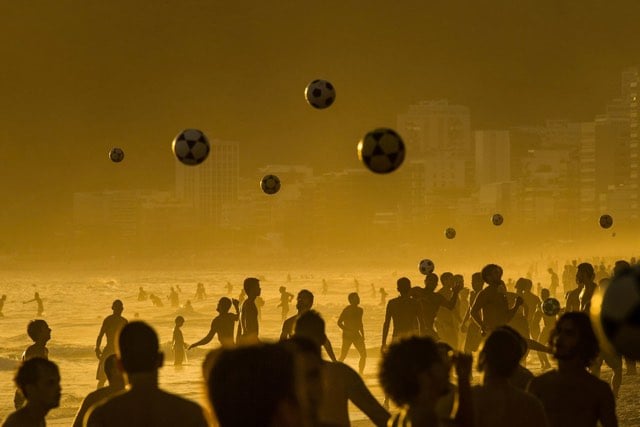

Photos by AP Photo/UNRWA, Justin Sullivan/Getty Images, Robert Cohen/MCT/St. Louis Post-Dispatch, Andrew Hara/Getty Images, Yasuyoshi Chiba/Agence France-Presse, and ESA/Rosetta/MPS for OSIRIS Team, respectively.
Many many more photos of the year at In Focus, Reuters, Buzzfeed, Agence France-Presse, the NY Times, Time, and The Big Picture.

When I went to the Poptech conference 10 years ago, one of the talks featured one of the world’s largest books, a book of photographs of Bhutan. The book used to fetch $10,000 a copy, but Amazon now sells it for just under $300. Something is fishy though…many of the vendors selling the book are shipping it for only $3.99, which seems unlikely for a book that weighs 133 pounds. (via cory)
Update: Long story short, there were two versions of this book made: the big one and a smaller one that’s only a foot and a half tall. That Amazon link used to go to the big book but it’s the little one now. Make sense? Anyway, here’s a link to the big one if you want to buy it for $5,824.34 with free shipping. (thx everyone)
2014 was a year that humans treated each other horribly. But we continue to treat the natural world even worse. Living Alongside Wildlife has a list of 22 species of animal declared extinct in 2014, extending humanity’s long streak of causing plant and animal extinctions.
The last known Christmas Island Forest Skink (Emoia nativitatis) died alone in a zoo on May 31st, 2014. It is unknown why the species disappeared from its natural habitat of Christmas Island (an Australian territory) but invasive species may have played a key role.
The St. Helena Giant Earwig (Labidura herculeana) is extinct. This species is notable for being fairly large (over three inches) and was found on the island of St. Helena in the southern Atlantic Ocean.
Plectostoma sciaphilum was a snail that lived entirely on one Malaysian hill. A cement company wiped them all out.
Earlier this month, one of the last remaining northern white rhinos died; only 5 remain. The western black rhino was declared extinct in 2011, wiped out by poaching.
If you weren’t watching the new HD remaster of The Wire over the holidays, you may have been tuning in to Black Mirror on Netflix. Charlie Brooker’s dystopian sci-fi series was broadcast in Britain beginning in 2011 but only recently became available in the US on Netflix. Emily Nussbaum reviews the show for the New Yorker’s latest issue.
Still, for all the show’s inventive storytelling, its true provocation is its righteous outrage, which shares something with Mike White’s whistle-blower series “Enlightened,” although it’s overlaid with a dark filter. Like “Enlightened,” “Black Mirror” is about love in the time of global corporate hegemony. It’s a bleak fairy tale that doubles as an exposé. An anthology series, it consists of six one-hour episodes spanning two seasons (plus a Christmas special), each with a new story and a different cast. In various future settings, Brooker’s characters gaze into handhelds or at TV-walled cells, using torqued versions of modern devices. In one episode, a couple has sex while stupefied by virtual visions of earlier, better sex. In another, a woman builds a replica of her husband from his photos and posts on social media. In a third, workers watch streaming schlock and are docked points if they shut their eyes. Some plots deal with political terrorism (or performance art-on this show, there’s little difference) and the criminal-justice system; there are warped versions of reality TV. Though the episodes vary in tone, several have a Brechtian aggression: the viral video “Too Many Cooks” would fit right in. But, in even the most perverse installments, there’s a delicacy, a humane concern at how easily our private desires can be mined in the pursuit of profit. The worlds can be cartoonish, but the characters are not.
Like Nussbaum, I also watched the show “through occult means”1 and it’s fun hearing from friends who are catching up on it. Too bad the show couldn’t have found a way over here earlier.
Update: From Josh Dzieza at The Verge, I can’t stop comparing everything to Black Mirror:
A friend recently told me that his favorite thing about the show Black Mirror is that he finally has a term for a certain type of technological anxiety. It’s a type of anxiety that seemed everywhere this year. The Sony hack could have been an episode of Black Mirror, as could Gamergate. In the same way that we refer to Blade Runner as shorthand for gritty dystopian cityscapes, Gattaca for worries about corporate use of genetic information, and Terminator for ominously powerful AI, Black Mirror has become shorthand for a certain type of contemporary internet-age creepiness.
It’s interesting to hear the TV critic for the New Yorker all but admit to pirating shows off the internet.↩
Susan Schneider, professor of philosophy at UConn, is among those researchers and scientists who believe that the first alien beings we encounter will be “postbiological in nature”…aka robots.
“There’s an important distinction here from just ‘artificial intelligence’,” Schneider told me. “I’m not saying that we’re going to be running into IBM processors in outer space. In all likelihood, this intelligence will be way more sophisticated than anything humans can understand.”
The reason for all this has to do, primarily, with timescales. For starters, when it comes to alien intelligence, there’s what Schneider calls the “short window observation” — the notion that, by the time any society learns to transmit radio signals, they’re probably a hop-skip away from upgrading their own biology. It’s a twist on the belief popularized by Ray Kurzweil that humanity’s own post-biological future is near at hand.
“As soon as a civilization invents radio, they’re within fifty years of computers, then, probably, only another fifty to a hundred years from inventing AI,” Shostak said. “At that point, soft, squishy brains become an outdated model.”
To use Elon Musk’s language, biological beings would be a “biological boot loader for digital superintelligence”. Schneider’s full paper on the topic is here: Alien Minds.
Hiro teaching Baymax how to fist bump in Big Hero 6.
Update: Jason Porath smartly speculates that Big Hero 6’s fist bump scene was a social media snack sized moment inserted into the movie for marketing purposes, which is part of a larger industry trend.
I don’t have a good word to describe this phenomenon, so I’m going to term it “hashgags.” This is a joke in an animated movie, usually input at the behest of marketing forces, that is used to sell the movie. It’s usually inserted late into production and test screened to within an inch of its life. Some are used repeatedly, some are one-offs that do well with trailers. And it is crippling the entire industry.
The Pew Research Center shares some of the most interesting findings from the reports they published in 2014. The increasing gap in wealth between white and non-white households since the 2007 recession was the most shocking to me.

Over the past 10 years, the net worth of black households has been cut in half.
A project called Maximum Distance. Minimum Displacement. analyzed the lyrics of several popular rappers for geographical mentions and had an industrial robot draw each rapper’s lyrical journey through the world. At a glance, you can see how worldly (N***as in Paris) or locally oriented (Straight Outta Compton) each rapper is. Compare world-traveller Jay Z:

with Kendrick Lamar:

Kendrick Lamar’s analysis is culled from the lyrics of his underground & independent albums and is heavy with Compton references. Over the next few years it will be interesting to see how mainstream successes and personal experience change the travel of his lyrics.
Kazuo Ishiguro wrote his excellent novel, The Remains of the Day, in only four weeks (more or less).
So Lorna and I came up with a plan. I would, for a four-week period, ruthlessly clear my diary and go on what we somewhat mysteriously called a “Crash”. During the Crash, I would do nothing but write from 9am to 10.30pm, Monday through Saturday. I’d get one hour off for lunch and two for dinner. I’d not see, let alone answer, any mail, and would not go near the phone. No one would come to the house. Lorna, despite her own busy schedule, would for this period do my share of the cooking and housework. In this way, so we hoped, I’d not only complete more work quantitively, but reach a mental state in which my fictional world was more real to me than the actual one.
If you’ve read The Hobbit and the Lord of the Rings trilogy (and/or watched the movies1) but didn’t delve into the appendices or, shudder, The Silmarillion, this is the video for you. It explains about the Gods who created Middle Earth, what wizards are (not men, but angels), and the specialness of Men and Elves.
I saw all three of The Hobbit movies and the last one really isn’t worth watching. Jackson never gets close to making us care about Thorin or the dwarves. Bilbo, played wonderfully by Martin Freeman, should have been the focus…which he was, to a greater extent, in the second movie (which was the best of the three by a wide margin). The problem is, The Hobbit isn’t so much a story about Bilbo as it is a story told *by* Bilbo. Anyway. ↩
From Every Frame a Painting, an appreciation of Jackie Chan and his particular and excellent brand of action comedy.
I love old Jackie Chan movies. When I lived in Minneapolis, a theater there showed them on Saturday nights, late. Drunken Master II is a particular favorite…the final fight scene is AMAZING. The part about how the camera never moves and shoots wide-angle during his scenes is why action in contemporary Hollywood films leaves me yawning.
From the New Yorker’s Vauhini Vara, four charts that defined the world in 2014.

One of the most talked-about charts of the year, tucked inside a National Bureau of Economic Research working paper published in October by the economists Emmanuel Saez and Gabriel Zucman, isn’t, strictly speaking, about 2014. The chart stops in 2012, which is the last year for which relevant data was available. Saez and Zucman found that wealth in the U.S. has been distributed increasingly unequally over the past three decades, and that almost the entire increase in inequality has to do with the rising share of wealth held by the 0.1 per cent — from seven per cent, in 1978, to twenty-two per cent, in 2012, a level comparable to what the richest families held in the early twentieth century.
So, if the trend held over the past two years, the top 0.1% of Americans have more wealth than the bottom 90% for the first time since right before WWII. When that data comes out, we’ll see a ton of think- and trend-pieces about it…but unless the US government gets serious about redistributing that wealth, not much will be done about it.
Update: From Co.Design, The 18 Best Infographics Of 2014. And on Medium, Eleven Stunning Graphs From 2014 That You Should See.
io9 collected a bunch of the most amazing science images of 2014. I posted several of these this year, including the monkey selfie, the marble harvesting video, the volcanic blast, the giant red leech eating a worm, feather vs. bowling ball in a vacuum, and beautiful chemistry. One they missed that I would have included: 4K time lapse video of the Sun.
As a young graduate student, Brian Greene caught the very beginning of the superstring revolution in physics. 30 years later, Greene provides an accessible overview of string theory’s current status.
While spectacularly successful at predicting the behavior of atoms and subatomic particles, the quantum laws looked askance at Einstein’s formulation of gravity. This set the stage for more than a half-century of despair as physicists valiantly struggled, but repeatedly failed, to meld general relativity and quantum mechanics, the laws of the large and small, into a single all-encompassing description.
Such was the case until December 1984, when John Schwarz, of the California Institute of Technology, and Michael Green, then at Queen Mary College, published a once-in-a-generation paper showing that string theory could overcome the mathematical antagonism between general relativity and quantum mechanics, clearing a path that seemed destined to reach the unified theory.
The idea underlying string unification is as simple as it is seductive. Since the early 20th century, nature’s fundamental constituents have been modeled as indivisible particles-the most familiar being electrons, quarks and neutrinos-that can be pictured as infinitesimal dots devoid of internal machinery. String theory challenges this by proposing that at the heart of every particle is a tiny, vibrating string-like filament. And, according to the theory, the differences between one particle and another — their masses, electric charges and, more esoterically, their spin and nuclear properties — all arise from differences in how their internal strings vibrate.
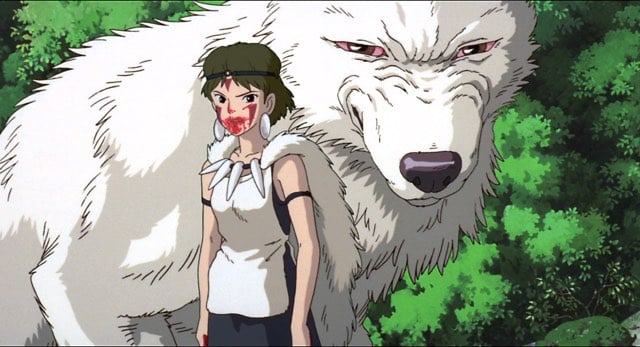
When I first saw it during the magical movie year of 1999, Hayao Miyazaki’s Princess Mononoke completely blew me away. Now that it’s (finally!) out on Blu-ray1, I can’t wait to see it again. Bonus: the ability to watch in the original Japanese with English subtitles.
Who out there is still buying Blu-ray? I buy one occasionally but only when I really really care about the picture quality. Otherwise, streaming off of Amazon, iTunes, or Netflix is fine. ↩
It is nearly inconceivable how small we are in comparison to the size of the universe, but this video may make it a little less inconceivable. Do you know that the Sun is tiny compared to some other stars?
The first part of this video, the bit with the molten sugar and cooling table, is the most interesting, but the whole thing is worth a watch.
Reminds me of the lettered rock made at Teddy Grays.
A major study conducted by the Harvard School of Public Health has found a significant link between autism and the exposure of the mother to high levels of air pollution during the third trimester of pregnancy.
Researchers focused on 1,767 children born from 1990 to 2002, including 245 diagnosed with autism. The design of the study and the results rule out many confounding measures that can create a bias, Weisskopf said. The researchers took into account socioeconomic factors that can influence exposure to pollution or play a role in whether a child is diagnosed with autism.
The fact that pollution caused problems only during pregnancy strengthened the findings, since it’s unlikely other factors would have changed markedly before or after those nine months, he said in a telephone interview.
The ultimate cause of autism remains a mystery in most cases, said Charis Eng, chairwoman of the Lerner Research Institute’s Genomic Medicine Institute at the Cleveland Clinic in Ohio. While the Harvard study isn’t definitive and the findings could be coincidental, it’s not likely given the large size and the precise results, she said in a telephone interview.
“The truth is there has to be gene and environmental interactions,” said Eng, who wasn’t involved in the study. “I suspect the fetus already had the weak autism spectrum disorder genes, and then the genes and the environment interacted.”
It would be a huge help (and I am not in any way being facetious about this) if Jenny McCarthy and all the other celebrity “vaccines cause autism” folks threw their weight behind cleaning up pollution the way they attacked vaccination. Redeem yourselves. (via @john_overholt)
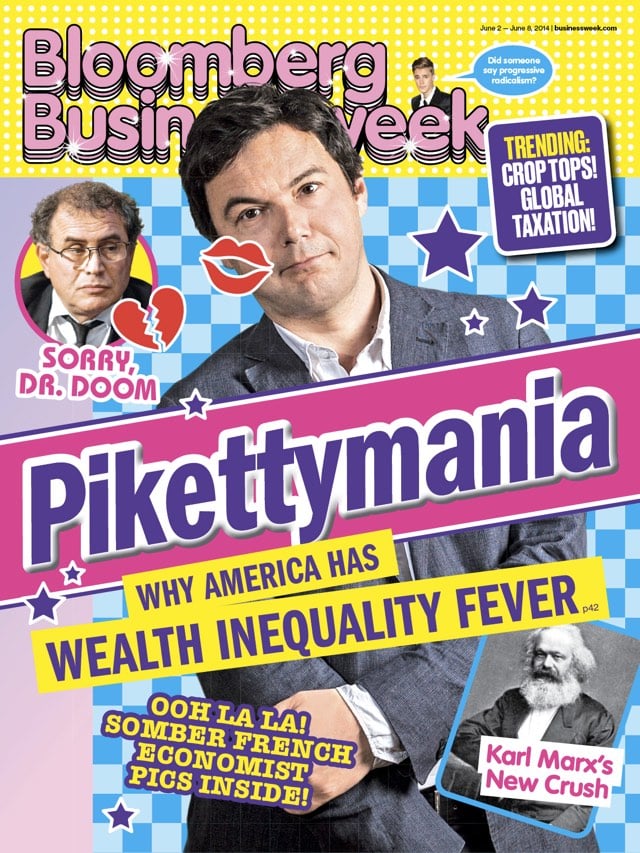
The picks for the finest magazine covers of the year are starting to trickle out. Coverjunkie is running a reader poll to pick the most creative cover of 2014. Folio didn’t pick individual covers but honored publications that consistently delivered memorable covers throughout the year; no surprise that The New York Times Magazine and Bloomberg Businessweek were at the top of the heap.
See also the best book covers of 2014.
From Mallory Ortberg, some reviews of children’s movies penned by objectivist Ayn Rand.
“Mary Poppins”
A woman takes a job with a wealthy family without asking for money in exchange for her services. An absurd premise. Later, her employer leaves a lucrative career in banking in order to play a children’s game. -No stars.
During the production of 2001: A Space Odyssey, Stanley Kubrick commissioned well-known film score composer Alex North to do the score for the film. North had previously done scores for A Streetcar Named Desire, Spartacus, Cleopatra, and Who’s Afraid of Virginia Woolf? and later received an honorary Oscar for his lifetime of work. As production progressed, Kubrick began to feel that the temporary music he used to edit the film was more appropriate. From an interview with Kubrick by Michel Ciment:
However good our best film composers may be, they are not a Beethoven, a Mozart or a Brahms. Why use music which is less good when there is such a multitude of great orchestral music available from the past and from our own time? When you’re editing a film, it’s very helpful to be able to try out different pieces of music to see how they work with the scene. This is not at all an uncommon practice. Well, with a little more care and thought, these temporary music tracks can become the final score. When I had completed the editing of 2001: A Space Odyssey, I had laid in temporary music tracks for almost all of the music which was eventually used in the film. Then, in the normal way, I engaged the services of a distinguished film composer to write the score. Although he and I went over the picture very carefully, and he listened to these temporary tracks (Strauss, Ligeti, Khatchaturian) and agreed that they worked fine and would serve as a guide to the musical objectives of each sequence he, nevertheless, wrote and recorded a score which could not have been more alien to the music we had listened to, and much more serious than that, a score which, in my opinion, was completely inadequate for the film.
And so the temporary music became the iconic score we know today. For comparison, the embedded video shows how North’s original score would have sounded over the opening credits and initial scene.
Selections from North’s original score were later released publicly. Here’s a 38-minute album on Spotify:
Kubrick was absolutely right to ditch North’s score…it’s perfectly fine music but totally wrong for the movie, not to mention it sounds totally dated today. The classical score gives the film a timeless quality, adding to the film’s appeal and reputation more than 45 years later. (via @UnlikelyWorlds)
Update: Two additional facets to this story. North first learned that Kubrick ditched his score at the NYC premiere of the film; he was reportedly (and understandably) “devastated”. And even when Kubrick was artistically satisfied with the music he chose, negotiations to procure the rights weren’t necessarily smooth.
2) Kubrick’s associates did obtain licenses from Ligeti’s publishers and from record and radio companies, although they were not forthcoming about the pivotal role assigned to the music in the film; 3) Ligeti learned about the use of his music not from his publishers but from members of the Bavarian Radio Chorus; 4) he attended a showing of the film with stopwatch in hand, furiously scribbling down timings — thirty-two minutes in all;
Kubrick was undoubtably of the “shoot first, ask questions later” school of negotiation. (via @timrosenberg)
There’s no blue pigment present in the wings of the morpho butterfly. So where does that shimmering brilliant blue color come from? It’s an instance of structural color, where the physical structure of the surface scatters or refracts only certain wavelengths of light…in this case, blue.
Eye color is another example of structural color in action. Eyes contain brown pigments but not blue. Blue, green, and hazel eyes are caused by Rayleigh scattering, the same phenomenon responsible for blue skies and red sunsets. Blue eyes and blue skies arise from the same optical process…that’s almost poetic. (thx, jared)
An exhibition by Danny Lyon of color photos he took in the NYC subway is being staged by the MTA. The photos have never been publicly shown before.


The trains shown in these two photos still run occasionally: just catch the M between 2nd Ave and Queens Plaza between 10am and 5pm on the two remaining Sundays in Dec.
The Kingdom of Dreams and Madness is a documentary which presents a year in the life of Studio Ghibli and its famed director, Hayao Miyazaki. The year in question was a particularly interesting one during which Miyazaki announced his retirement. The trailer:
Granted near-unfettered access to the notoriously insular Studio Ghibli, director Mami Sunada follows the three men who are the lifeblood of Ghibli — the eminent director Hayao Miyazaki, the producer Toshio Suzuki, and the elusive and influential “other director” Isao Takahata — over the course of a year as the studio rushes to complete two films, Miyazaki’s The Wind Rises and Takahata’s The Tale of The Princess Kaguya. The result is a rare “fly on the wall” glimpse of the inner workings of one of the world’s most celebrated animation studios, and an insight into the dreams, passion and singular dedication of these remarkable creators.
(via @garymross)
Update: The Kingdom of Dreams and Madness is now available for rent/buy on Amazon and iTunes.
Somehow I didn’t know that Zoolander (which Terrence Malick and I both love and Roger Ebert hated) began as a short clip Ben Stiller did for the 1996 VH1 Fashion Awards.
(via the dissolve)

I’m adding mine to the chorus of voices praising Transparent, the Amazon Original Series starring Jeffrey Tambor, aka Arrested Development’s Pop Pop. Tambor plays a retired college professor who is transitioning to living as a woman. Each episode is 30 minutes long and the pacing is sitcom-like, but the show is equally comedic and dramatic. The show started off kind of slow for me but got better and better as the season went on. Here’s a trailer.
The first episode is free to watch but for the rest you’ll need an Amazon Prime subscription1 (for which they offer a 30-day trial). Highly recommended, Tambor is amazing. Oh, and they’re doing a second season.
I wonder how effective this tactic is in driving new Prime subscriptions. It’s weird that you can’t just buy the whole season of the show for $20 or something. I would love to see their internal analysis of how much revenue each Prime member brings in over X number of years versus potential lost revenue from direct sales by non-members. ↩
The soundtrack for PT Anderson’s Inherent Vice is now on Spotify, well all except for one song. The album is even more partially on Rdio. For the whole thing, you’ll have to head to Amazon.
The fifth track, Spooks, is a variation of a Radiohead song that’s never been officially released. (via @naserca)
Legal scholar Cass Sunstein presents his annual list of the movies that best showcased behavioral economics for 2014.
Best actor: In 1986, behavioral scientists Daniel Kahneman and Dale Miller developed “norm theory,” which suggests that humans engage in a lot of counterfactual thinking: We evaluate our experiences by asking about what might have happened instead. If you miss a train by two minutes, you’re likely to be more upset than if you miss it by an hour, and if you finish second in some competition, you might well be less happy than if you had come in third.
“Edge of Tomorrow” spends every one of its 113 minutes on norm theory. It’s all about counterfactuals — how small differences in people’s actions produce big changes, at least for those privileged to relive life again (and again, and again). Tom Cruise doesn’t get many awards these days, or a lot of respect, and we’re a bit terrified to say this — but imagine how terrible we’d feel if we didn’t: The Top Gun wins the Becon.
(via @tylercowen)
Mobile devices and software advances have helped to create a burgeoning on-demand economy that — in some places — makes it possible to live your life without leaving your house (and if you do decide to leave, it’s easy to order a car). But that’s only part of the story. In Quartz, Leo Mirani explains how he experienced the on-demand economy long before tech revolution:
These luxuries are not new. I took advantage of them long before Uber became a verb, before the world saw the first iPhone in 2007, even before the first submarine fibre-optic cable landed on our shores in 1997. In my hometown of Mumbai, we have had many of these conveniences for at least as long as we have had landlines — and some even earlier than that. It did not take technology to spur the on-demand economy. It took masses of poor people.
Following in the footsteps of Too Many Cooks is Unedited Footage of a Bear. It aired for the first time on Adult Swim this week in their 4am infomercial slot. It starts off as a nature thing with a bear which is interrupted by a fake infomercial and then. Gets. WEIRD.
Update: Adult Swim has a site set up for Claridryl. There might be some answers there to some questions you might have? About stuff? (via devour & @veganstraightedge)
At the NY Times, Nicholas Blechman weighs in with his picks for the best book covers of 2014.

Dan Wagstaff, aka The Casual Optimist, picked 50 Covers for 2014.

From Jarry Lee at Buzzfeed, 32 Of The Most Beautiful Book Covers Of 2014.
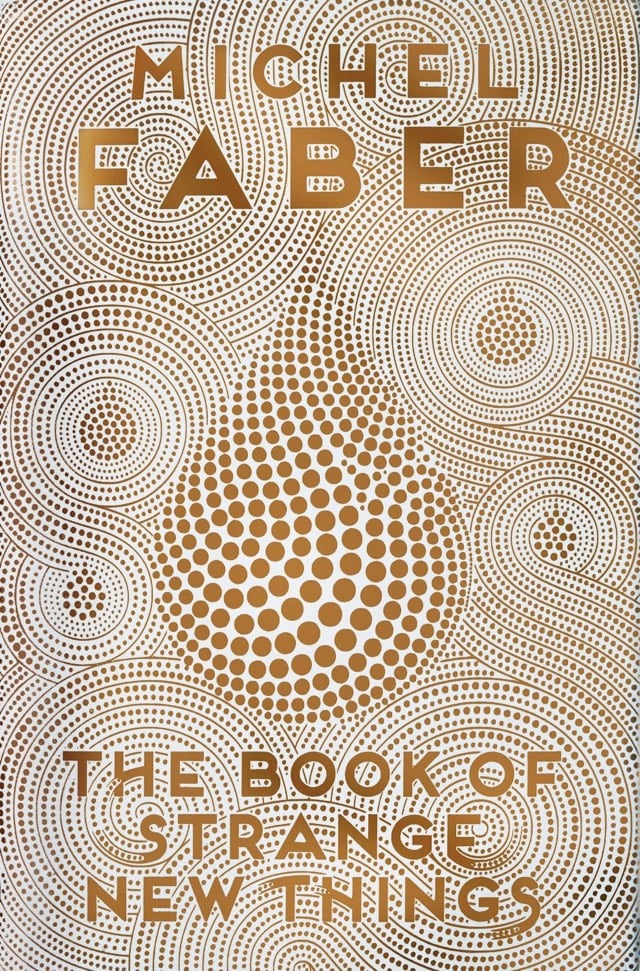
Paste’s Liz Shinn and Alisan Lemay present their 30 Best Book Covers of 2014.
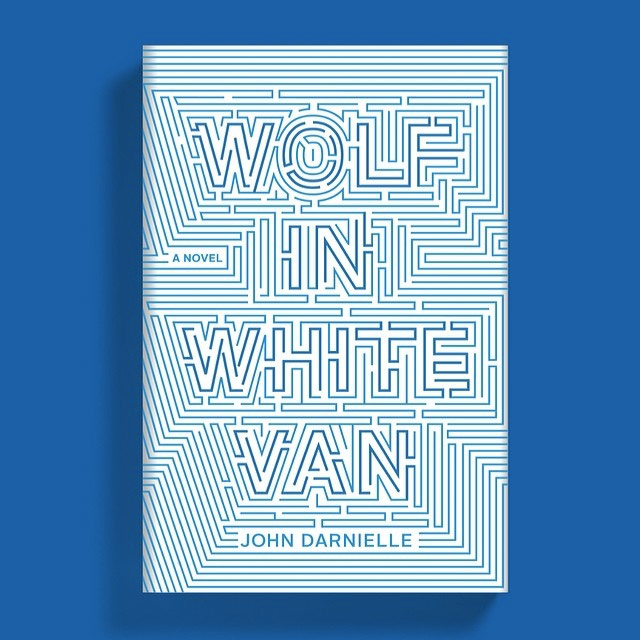
And from much earlier in the year (for some reason), Zachary Petit’s 19 of the Best Book Covers of 2014 at Print.
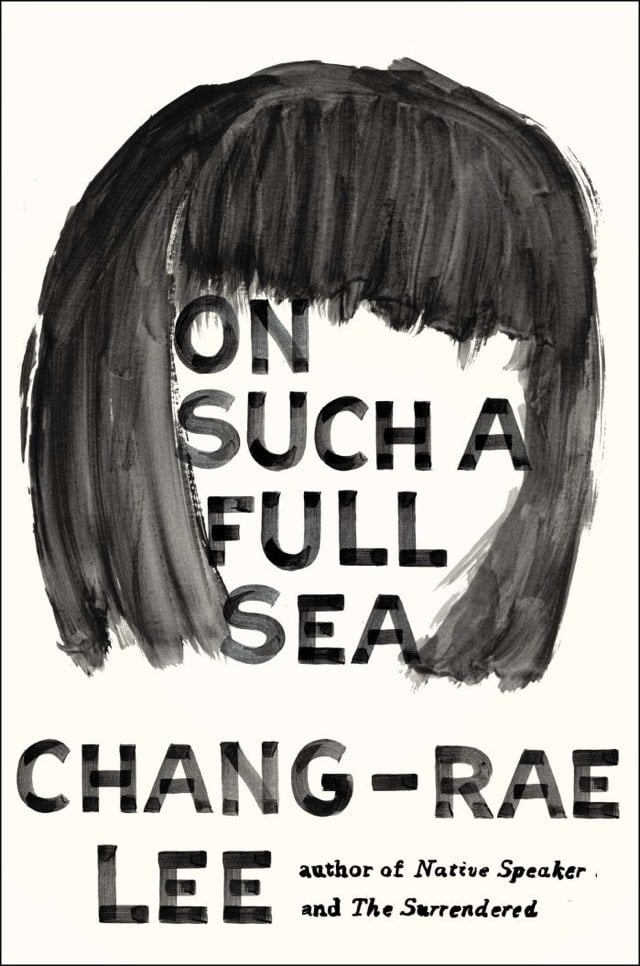
Michael Lewis has Eight Things I Wish for Wall Street.
2. No person under the age of 35 will be allowed to work on Wall Street.
Upon leaving school, young people, no matter how persuasively dimwitted, will be required to earn their living in the so-called real economy. Any job will do: fracker, street performer, chief of marketing for a medical marijuana dispensary. If and when Americans turn 35, and still wish to work in finance, they will carry with them memories of ordinary market forces, and perhaps be grateful to our society for having created an industry that is not subjected to them. At the very least, they will know that some huge number of people — their former fellow street performers, say — will be seriously pissed off at them if they do risky things on Wall Street to undermine the real economy. No one wants a bunch of pissed-off street performers coming after them.
(via nextdraft)
Quick three minute video about how they made the Millennium Falcon hyperdrive malfunction noise for Star Wars.
Favorite detail: one of the sounds is from the clanking pipes in the studio’s bathroom. (via df)
Finally, courtesy of the Auralnauts, we get the Terminator trailer that we deserve. Time travel is hilarious.
I wish we could send you back with pants, but the technology just isn’t there yet. So as soon as you hit the ground, you’re going to want to find some pants. I know you can do it…because you already did it.
Like the old wives’ tale says, if you want to fix the future, just keep sending Terminators back in time. (via @mouser_nerdbot)
Adrian Curry selects his favorites for the best movie posters of 2014. This one, for Gabe Polsky’s Red Army, caught my eye:
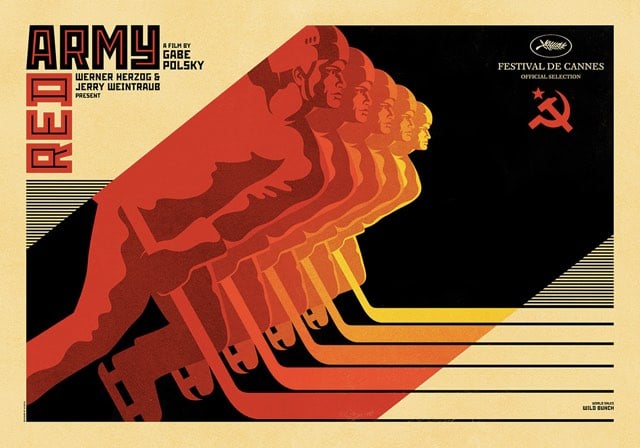
See also the best poster lists from Empire, Entertainment Weekly, and Indiewire. (via subtraction)
Woo! New Terrence Malick film! Knight of Cups stars Christian Bale, Cate Blanchett, and Natalie Portman with cinematography by Emmanuel Lubezki, who also did Children of Men, Gravity, Birdman, and Malick’s The Tree of Life. Here’s the trailer:
The Tree of Life *wrecked* me.
The American Museum of Natural History is planning on expanding.
The American Museum of Natural History, a sprawling hodgepodge of a complex occupying nearly four city blocks, is planning another major transformation, this time along Columbus Avenue: a $325 million, six-story addition designed to foster the institution’s expanding role as a center for scientific research and education.
The new Richard Gilder Center for Science, Education and Innovation would stand on a back stretch of the museum grounds near West 79th Street that is now open space.
The addition, to be completed as early as 2019 — the museum’s 150th anniversary — would be the most significant change to the museum’s historic campus since the Art Deco Hayden Planetarium building became the glass-enclosed Rose Center for Earth and Space 14 years ago.
According to a recent paper, as little as 12 seconds of video is enough to identify a particular shooter’s personal “motion signature”.
Here’s a way to shake off anonymity - literally. Footage from wearable cameras contains a “motion signature” unique to you. The discovery could identify police wearing body cameras, but also let authorities single out protesters uploading footage, say.
(via @buzz)

Wait, how did I miss this…Hilary Mantel’s excellent pair of novels about Thomas Cromwell & Henry VIII, Wolf Hall and Bring Up the Bodies, are being turned into a six-part BBC miniseries. Outstanding! Noted Shakespearian actor Mark Rylance will play Cromwell with Homeland’s Damian Lewis as Henry VIII.
BBC One will be airing the show in Britain in January while American audiences without access to BitTorrent will have to wait until PBS airs it in April.
I’ve read a lot about introverts and extroverts over the years (posted this back in Feb 2003 for example), but this list (found here) of how to care for introverts still hit me like a pile of bricks.
1. Respect their need for privacy.
2. Never embarrass them in public.
3. Let them observe first in new situations.
4. Give them time to think; don’t demand instant answers.
5. Don’t interrupt them.
6. Give them advance notice of expected changes in their lives.
7. Give them 15 minute warnings to finish whatever they are doing.
8. Reprimand them privately.
9. Teach them new skills privately.
10. Enable them to find one best friend who has similar interests & abilities.
11. Don’t push them to make lots of friends.
12. Respect their introversion; don’t try to remake them into extroverts.
It’s just dawned on me that when something goes wrong in my life, it’s often one of the things on this list that’s the culprit, especially #4 and #6. And #2 pretty much explains my middle and high school experience. Has anyone read Susan Caine’s Quiet: The Power of Introverts in a World That Can’t Stop Talking? I’ve heard great things about it, but haven’t had a chance to read yet. Thinking I should bump it to the top of my queue. Holy crap, it’s only $2.99 for Kindle…BOUGHT. (via @arainert)
Jordan Hoffman is a huge huge huge Star Trek fan. So great is his fandom that he is able to rank every single episode from every single Star Trek series from #695 to #1. Several TNG episodes make it into the top 10, including Yesterday’s Enterprise, Darmok, and The Best of Both Worlds.

Aerial Wallpapers is a collection of iPhone-sized wallpapers of satellite imagery and topographic maps from @juririm. I just downloaded several of these. The image above is a satellite image of the Namib Desert in southern Africa.
Update: See also Earth View, “a collection of the most beautiful and striking landscapes found in Google Earth”. Oh, and the Daily Overview. (via colossal)
Longreads is sharing some of their best, favorite, and most read long-form nonfiction articles of the year. So far, they’ve highlighted their weekly email picks and their most read exclusives, but they will be adding more as the month goes on. Some notable pieces include Ghosts of the Tsunami, You’re 16. You’re a Pedophile. You Don’t Want to Hurt Anyone. What Do You Do Now?, and David Foster Wallace and the Nature of Fact.
Update: Longform picked their favorite long articles in a number of different categories. #1 on their best of the year is Ta-Nehisi Coates’ The Case for Reparations.
Update: And here is Digg’s list.
Update: The New Yorker has a list of their most-read stories of 2014.
Physics World, the magazine of the Institute of Physics, has named their 2014 Breakthrough of the Year and nine runners-up. The top spot goes to the ESA’s Rosetta mission for landing on a comet.
By landing the Philae probe on a distant comet, the Rosetta team has begun a new chapter in our understanding of how the solar system formed and evolved — and ultimately how life was able to emerge on Earth. As well as looking forward to the fascinating science that will be forthcoming from Rosetta scientists, we also acknowledge the technological tour de force of chasing a comet for 10 years and then placing an advanced laboratory on its surface.
The other nine achievements, which you can click through to read about, are:
Quasar shines a bright light on cosmic web
Neutrinos spotted from Sun’s main nuclear reaction
Laser fusion passes milestone
Electrons’ magnetic interactions isolated at long last
Disorder sharpens optical-fibre images
Data stored in magnetic holograms
Lasers ignite ‘supernovae’ in the lab
Quantum data are compressed for the first time
Physicists sound-out acoustic tractor beam
From Quora, an answer to the question “If we pour water on the sun with a bucket as big as the sun, will the sun be extinguished?”
The probable answer is “no.” The Sun involves a special type of fire that is able to “burn” water, and so it will just get hotter, and six times brighter.
Water is 89% oxygen BY MASS. And the Sun’s overall density is 1.4 times that of water. So if you have a volume of water the VOLUME of the Sun, it will have 1/1.4 = 0.71 times the mass of the Sun, and this mass will be .71*.89 = 63% of a solar mass of oxygen and 8% of a solar mass of hydrogen. The Sun itself is 0.74 solar masses of hydrogen and 0.24 solar masses of helium.
So you end up with a 1.7 solar mass star with composition 48% hydrogen, 37% oxygen, and 14% helium (with 1% heavier elements).
Now, will such a star burn? Yes, but not with the type of proton-proton fusion the Sun uses. A star 1.7 times the mass of the Sun will heat up and burn almost entirely by the CNO fusion cycle, after making some carbon and nitrogen to go along with all the oxygen you’ve started with. So with CNO fusion and that mass you get a type F0 star with about 1.3 times the radius and 6 times the luminosity of the present Sun, and a temperature somewhat hotter than the Sun (7200 K vs. the Sun’s 5800 K). It will be bluish-white, with more UV. That, along with that 6 times heat input, will cause the Earth’s biosphere to be fried, and oceans to probably boil.
Well, we probably shouldn’t do that then. (via gizmodo)
This time lapse video of storm clouds by Nicolaus Wegner is flat-out incredible, by far the best of its kind.
Crank up the sound for this one. Previously: Stormscapes 1. (via bad astronomy)
While working as a filmmaker as part of the Scott Expedition, Temujin Doran made a beautifully shot and edited short film about a small team of people who live and work on Antarctica’s Union Glacier during the summer.
For me, this film seems a bit like an antithesis to many expedition and adventure documentaries. There is no great achievement or record broken, nor any real challenge to overcome. Instead it concerns minor details; the everyday tasks of the staff that were made more special by the environment surrounding them. And in fact, I think that’s what attracted me to make this film - the delightful trivialities of an average life, working in Antarctica.
Wes Anderson-esque. (thx, joseph)
Last year, I did a meta holiday gift guide where I picked some of the best items off of the best gift guides out there. Since we’re getting down to the wire here on shopping time (not that you should buy anything for anyone this holiday season or any other time of the year), let’s crank up this year’s version.
Consider giving to charity this year. If you can’t spare the time to volunteer (look here or Google for specific opportunities in your area), go on Charity Navigator or Give Well to find an organization worth your attention. Or go on Kiva and give small loans to dozens of families around the world.
For their list this year, The Wirecutter did a list of The Things We Want to Give. Items include The Neat Ice Kit, Benton’s ham, and The Flavor Thesaurus. Hmm, I picked all food stuff there. I must be hungry.
I recommend these every year: the Tovolo King Cube Ice Tray and the KitchenAid Professional 600 Series 6-Quart Stand Mixer.
From Boing Boing’s Happy Mutant’s Gift Guide 2014, the excellent Eyes on the Prize documentary on DVD, the LifeSpan TR1200-DT5 Treadmill Desk, a Lodge 10.5-inch round skillet (can personally vouch for this), and perhaps my favorite Amazon item of all time, the 55-gallon drum of personal lubricant. Don’t worry, the latter item includes a lube pump so you don’t need to buy it separately.
For the sports fan in your life, SB Nation’s 2014 Holiday Gift Guide includes Zubaz pants (!!), Big League Chew, the Bluetooth Gramophone, and a home beer brewing kit. Throwback-errific!
Among the items on the Tools & Toys Christmas Catalog, Bartlett’s Familiar Quotations and the Bellroy Slim Sleeve Wallet (which is my own personal wallet).
Nothing on Mat Honan’s 8 Perfect Gift Ideas for ‘Twitter Dads’ really grabbed me (even though I am an official Twitter Dad), except for the Bugaboo Bee. We had the first iteration of that stroller and it was the absolute best thing. We wore out two sets of wheels strollering Ollie and Minna around the city in that thing.
But I’ll take one of everything off of The Kid Should See This Gift Guide. Especially Animalium, the Crosley portable turntable, My Neighbor Totoro on Blu-ray, and a vintage typewriter. [Update: My friend Dan says to avoid Crosley turntables: “They use ceramic cartridges that track 3x as heavy as standard carts, permanently damaging records.” I have no idea what that means, but Dan knows things about turntables so you might want to make another choice.]
Good year for science-ish nonfiction books: How We Got to Now by Steven Johnson, What If? by Randall Munroe, Being Mortal by Atul Gawande, Superintelligence by Nick Bostrom, and Creativity, Inc. by Ed Catmull.
And cookbooks: Plenty More from Yotam Ottolenghi, MEAT by Pat LaFrieda, Tartine Bread by Chad Robertson, Michael Ruhlman’s Egg, Death & Co: Modern Classic Cocktails, My Paris Kitchen from David Lebovitz (whose Paris dining recommendations are top notch), and Jeffrey Morgenthaler’s The Bar Book.
The Brooklyn Holiday Gift Guide features products made locally in Brooklyn, including bracelets with subways maps and kottke.org favorite, Tattly.
Tom Bihn’s What We’re Giving list includes Fairbault wool blankets and their own Shop Bag. (via @widepipe)
One of many holiday lists from Food52, the Under $25 Gift Guide features Heirloom Seed Art Packets and this Water Bottle with Charcoal Filter.
The Continuous Lean went on a serious listing bender with The Epic ACL Holiday Gift Guide 2014. The stylish selections include the Whiskey Wedge, the Jaguar F-Type Project 7, and the Lego Architecture Fallingwater set.
Josh Rives made a list of gifts that don’t suck. Among the non-suckage is The Dangerous Book for Boys, Coudal and Draplin’s excellent Field Notes, and Cards Against Humanity.
Many many things on the NY Times Holiday Gift Guide, including Julia, Child these awesome cement stair planters, and History of the World in 1,000 Objects.
Since their acquisition by Vox, Eater has been better than ever. Their Holiday Gift Ideas 2014 package is overflowing with good choices, among them are sausages from Butcher & the Boar (smoooooked cheddarwurst!!!) and Fictitious Dishes.
Speaking of Vox, The Verge has a load of tech-oriented picks, including a selection under . They recommend MUJI notebooks and David Mitchell’s The Bone Clocks. One of The Verge’s more baller picks is the Nintendo Wii U Mario Kart 8 Deluxe Set. Which, droooooool. Santa, you got me covered on this?
Misc: the Good Web Bundle gives you subscriptions to five indie services/sites for one low price. You can get 8GB flash drives in necklace form now. From Haruki Murakami, a recently released short novel about “a boy imprisoned in a nightmarish library”. I have no idea if they are actually vintage or just made to look so, but you can find several vintage Soviet chess sets on Etsy (like this one); I bought one recently and if someone faked it, they did a good job. (Even if it’s fake, it’s real, etc.) You can buy Post-It Notes that are almost two-feet across.
Update: Added the guide from Tools & Toys and added a warning about the portable turntable. Added giant Post-It Notes. Added The Brooklyn Holiday Gift Guide. Added Tom Bihn’s list. Added Food52 list. Added The Continuous Lean set. Added a list of gifts that don’t suck. Added lists from the NY Times, Eater, and The Verge.
Whilst roving about Mars, Curiosity has slowly but surely racked up evidence for a past Mars that was warm, wet, and possibly habitable.
John P. Grotzinger of Caltech, the project scientist for the mission, reported at a news conference on Monday that the rover’s yearlong trek to Mount Sharp provided strong new evidence that Gale Crater had large lakes, rivers and deltas, on and off, for millions to tens of millions of years. The geology shows that even when the surface water dried up, plenty of water would have remained underground, he said.
Moreover, the team concluded, numerous deltalike and lakelike formations detected by orbiting satellites are almost certainly the dried remains of substantial ancient lakes and deltas. None of this proves that life existed on the planet, but the case for an early Mars that was ripe and ready for life has grown stronger.
“As a science team, Mars is looking very attractive to us as a habitable planet,” Dr. Grotzinger said in an interview. “Not just sections of Gale Crater and not just a handful of locations, but at different times around the globe.”
See also the interactive 28 Months on Mars.
Update: And right on cue, Curiosity has recorded a two-month-long methane burst on Mars. One explanation for the methane is that it’s a waste product of living organisms.
The presence of methane is significant because the gas cannot exist for long. Calculations indicate that sunlight and chemical reactions in the Martian atmosphere would break up the molecules within a few hundred years, so any methane there now must have been created recently.
It could have been created by a geological process known as serpentinization, which requires both heat and liquid water. Or it could be a product of life in the form of microbes known as methanogens, which release methane as a waste product.
Even if the explanation for the methane turns out to be geological, the hydrothermal systems would still be prime locations to search for signs of life.
Update: And now Curiosity has found “biologically useful nitrogen” on Mars.
There is no evidence to suggest that the fixed nitrogen molecules found by the team were created by life. The surface of Mars is inhospitable for known forms of life. Instead, the team thinks the nitrates are ancient, and likely came from non-biological processes like meteorite impacts and lightning in Mars’ distant past.
Features resembling dry riverbeds and the discovery of minerals that form only in the presence of liquid water suggest that Mars was more hospitable in the remote past. The Curiosity team has found evidence that other ingredients needed for life, such as liquid water and organic matter, were present on Mars at the Curiosity site in Gale Crater billions of years ago.
“Finding a biochemically accessible form of nitrogen is more support for the ancient Martian environment at Gale Crater being habitable,” said Jennifer Stern of NASA’s Goddard Space Flight Center in Greenbelt, Maryland.
Update: The analysis of a year of weather and soil data collected by Curiosity indicates that a small amount of liquid water could exist below the surface of Mars.
Martian weather and soil conditions that NASA’s Curiosity rover has measured, together with a type of salt found in Martian soil, could put liquid brine in the soil at night.
Perchlorate identified in Martian soil by the Curiosity mission, and previously by NASA’s Phoenix Mars Lander mission, has properties of absorbing water vapor from the atmosphere and lowering the freezing temperature of water. This has been proposed for years as a mechanism for possible existence of transient liquid brines at higher latitudes on modern Mars, despite the Red Planet’s cold and dry conditions.
New calculations were based on more than a full Mars year of temperature and humidity measurements by Curiosity. They indicate that conditions at the rover’s near-equatorial location were favorable for small quantities of brine to form during some nights throughout the year, drying out again after sunrise. Conditions should be even more favorable at higher latitudes, where colder temperatures and more water vapor can result in higher relative humidity more often.
The Guardian and other media outlets have translated this news into Nasa’s Curiosity rover finds water below surface of Mars even though NASA’s release clearly states “we have not detected brines”. Come on, guys.
The Entire Screen of One Game is like the video game version of Powers of Ten. The game isn’t fun or winnable, but it will confuse your brain after only a few seconds. (via @pieratt)
If you’ve ever wondered how a designer does their thing (or even if you haven’t), this look-over-the-shoulder view of Aaron Draplin designing a logo for a fictional company in about 10 minutes is great. A nice reminder that design is truly about making it up as you go along.
I love Draplin. Internet treasure, that guy. And that lefty writing claw! Go lefties!
Every once in awhile on the site, I’ll use the phrase “in my wheelhouse”, meaning something that is particularly interesting to me. Well, Grantland’s long oral history of the making of Boogie Nights is so in my wheelhouse that I might be the captain.
When [Anderson] set out to film Boogie Nights, it was with a resolve bordering on arrogance. Compromise wasn’t part of the plan. Still, after an intense production and postproduction period — one in which the director had to manage a cranky, confused Burt Reynolds and an untested, rapping underwear model named Mark Wahlberg — Anderson was forced once again to fight studio heads for his cut of the film.
But Anderson’s vision prevailed this time. Nearly 20 years later, Boogie Nights endures. For its beautiful portrait of nontraditional families; for Reynolds and Wahlberg, the surrogate father and son, who were never better; for Philip Seymour Hoffman, squeezing into character and breaking hearts; for its prodigy director sticking to his guns and nailing it; for John C. Reilly’s hot-tub poetry; for Roller Girl. Is everybody ready? This is the making and near unmaking of Boogie Nights.
Man, I love that movie. But think on this: Leonardo DiCaprio as Dirk Diggler, Drew Barrymore as Roller Girl, and Bill Murray as Jack Horner.
In a series of tweets this morning, surgeon and author Atul Gawande called out the doctors who helped the CIA torture people.
1/The Senate CIA Torture Report reveals savage, immoral, utterly despicable practices by our govt. http://t.co/qZWUNtJSeU
— Atul Gawande (@Atul_Gawande) December 10, 20142/But the worst for me is to see the details of how doctors, psychologists, and others sworn to aid human beings made the torture possible.
— Atul Gawande (@Atul_Gawande) December 10, 20143/The torture could not proceed w/o medical supervision. The medical profession was deeply embedded in this inhumanity.
— Atul Gawande (@Atul_Gawande) December 10, 20144/It was doctors who devised the rectal infusions “as a means of behavior control.” (p100)
— Atul Gawande (@Atul_Gawande) December 10, 20145/Doctors suggested the water temperature for waterboarding and use of saline instead of free water to avoid water intoxication. (p86, 419)
— Atul Gawande (@Atul_Gawande) December 10, 20146/Doctors watched as stress positions inflicted pain, lacerations, and only stopped them when producing, e.g., shoulder dislocation (70)
— Atul Gawande (@Atul_Gawande) December 10, 20147/Psychologists, who were supposed to stop damaging interrogation, actually served as interrogators. (72)
— Atul Gawande (@Atul_Gawande) December 10, 20148/The Office of Medical Services provided consultation on when fractures and wounds were healed enough to resume torture. (p113)
— Atul Gawande (@Atul_Gawande) December 10, 20149/The Office of Medical Services wrote guidelines approving up to 3 waterboard sessions in 24 hours per prisoner. (p87)
— Atul Gawande (@Atul_Gawande) December 10, 201410/When torture caused Abu Zubaydah’s eyes to deteriorate, MDs only intervened to insure ability to see was saved to aid interrogation.(112)
— Atul Gawande (@Atul_Gawande) December 10, 201411/Doctors found prisoners with broken feet and still approved putting them into standing positions for up to 52 hours (p112)
— Atul Gawande (@Atul_Gawande) December 10, 201412/Doctors were long the medical conscience of the military. The worst occurred because gov’t medical leaders abdicated that role. (p87)
— Atul Gawande (@Atul_Gawande) December 10, 2014First do no harm.
Yarin Gal used an “inpainting” algorithm to extend the canvases of notable paintings. Like van Gogh’s Starry Night or Hokusai’s The Great Wave off Kanagawa:

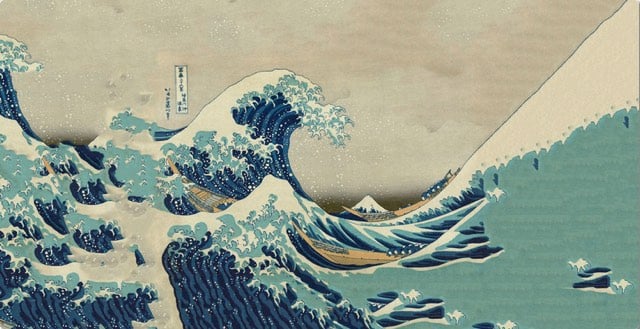
There’s a post on the Wolfram Alpha blog about how you can achieve similar effects using the Wolfram Language.
Wow, the art of making marbled paper, a short film from 1970. Charmingly British, just like the film about the Teddy Grays candy factory or the putter togetherer of scissors. Super cool how the inks are placed on a water bath, swirled expertly to make patterns, and then transferred to the paper.
Also of note: the segment on the conservation of old books starting at around 9:55…I never knew they took them apart like that to dunk the pages in water! Sadly, the Cockerell Bindery ceased operation in the late 1980s with the death of Sydney Cockerell and its contents were sold at auction. (thx, matt)
This is disgusting and awful and monstrous and I don’t even know what to say about it. The NY Times lists seven key points (full article) from a report released by the Senate Select Committee on Intelligence about the CIA’s torture practices. We knew it was bad, suspected it was worse, but this is just beyond.
The report describes extensive waterboarding as a “series of near drownings” and suggests that more prisoners were subjected to waterboarding than the three prisoners the C.I.A. has acknowledged in the past. The report also describes detainees being subjected to sleep deprivation for up to a week, medically unnecessary “rectal feeding” and death threats. Conditions at one prison, described by a clandestine officer as a “dungeon,” were blamed for the death of a detainee, and the harsh techniques were described as leading to “psychological and behavioral issues, including hallucinations, paranoia, insomnia, and attempts at self-harm and self-mutilation.”
This is surely the shit sandwich on top of an already unbearable year. I agree wholeheartedly with Vermont Senator Bernie Sanders, who issued this statement about the report:
A great nation must be prepared to acknowledge its errors. This report details an ugly chapter in American history during which our leaders and the intelligence community dishonored our nation’s proud traditions. Of course we must aggressively pursue international terrorists who would do us harm, but we must do so in a way that is consistent with the basic respect for human rights which makes us proud to be Americans.
“The United States must not engage in torture. If we do, in an increasingly brutal world we lose our moral standing to condemn other nations or groups that engage in uncivilized behavior.
There’s a good reason your cat looks so depressed. The days of her antics dominating YouTube are long gone. As the New Yorker’s Tad Friend explains, in addition to cats “YouTube was adults with camcorders shooting kids being adorably themselves. It was amateur hour.” Since then, YouTube has gone pro. Jeffrey Katzenberg predicts that “within five years, YouTube will be the biggest media platform of any, by far, in the entire world.” It’s where your kids are. It’s where the new stars are. And it’s where your cat isn’t. Welcome to the new Hollywood and Vine.
This is the craziest thing I’ve ever seen anyone do on skis: Cody Townsend skiing down a super steep face in a space between two rock walls no wider than a supermarket aisle. Powder Magazine called it “The Line of the Year”.
They forgot to put “Batshit Crazy” before the word “Line”. (via devour)
Rolling Stone lists the 40 most groundbreaking music albums in history. Kanye West makes the list with 808s and Heartbreaks, Dr. Dre with The Chronic, Nirvana with Nevermind, and the Beatles with Rubber Soul and Sgt. Pepper’s. About The Chronic:
The album sold a world to white America that it had never really seen before, and packaged it with a soundtrack so funky there was no avoiding it. It was both raw, uncut underground and carefully composed pop. If Public Enemy confronted white America, The Chronic seduced it. For the first time ever, hip-hop’s mainstream and America’s were one.
I counted only four women artists though: Mary J. Blige, Loretta Lynn, Nico, and Carole King.
John Lennon died 34 years ago today. The night he died, someone made a six-minute recording of what was playing on FM radio in NYC:
Almost every station was either discussing the death or playing a Beatles song. See also the front page of the NY Times the next day and the article in the Daily News about the shooting. (via wfmu & @UnlikelyWorlds)
Update: Legendary reporter Jimmy Breslin wrote a piece shortly after the shooting about the police officers that drove Lennon to the hospital that night.
As Moran started driving away, he heard people in the street shouting, “That’s John Lennon!”
Moran was driving with Bill Gamble. As they went through the streets to Roosevelt Hospital, Moran looked in the backseat and said, “Are you John Lennon?” The guy in the back nodded and groaned.
Back on Seventy-second Street, somebody told Palma, “Take the woman.” And a shaking woman, another victim’s wife, crumpled into the backseat as Palma started for Roosevelt Hospital. She said nothing to the two cops and they said nothing to her. Homicide is not a talking matter.
And that last paragraph, wow. (via @mkonnikova)
Using only squares, triangles, and the condition that each shape wants to move if less than 1/3 of its neighbors are like it, watch how extreme segregation appears in even the most random mixing of shapes.
These little cuties are 50% Triangles, 50% Squares, and 100% slightly shapist. But only slightly! In fact, every polygon prefers being in a diverse crowd. You can only move them if they’re unhappy with their immediate neighborhood. Once they’re OK where they are, you can’t move them until they’re unhappy with their neighbors again. They’ve got one, simple rule: “I wanna move if less than 1/3 of my neighbors are like me.”
Harmless, right? Every polygon would be happy with a mixed neighborhood. Surely their small bias can’t affect the larger shape society that much? Well… And… our shape society becomes super segregated. Daaaaang. Sometimes a neighborhood just becomes square, and it’s not their fault if no triangles wanna stick around. And a triangular neighborhood would welcome a square, but they can’t help it if squares ain’t interested.
Super super fascinating. Take your time and go through and play with all the interactive widgets. (via @ftrain)
A tribute to outer space in movies, featuring clips from Gravity, The Fountain, Alien, Star Wars, Solaris, Sunshine, Guardians of the Galaxy, and more.
Music is from Hans Zimmer’s soundtrack for Interstellar, which I was initially lukewarm on but have been listening to consistently over the past week or so. (via devour)
kottke.org favorite Matt Zoller Seitz weighs in on his top 10 best TV shows for 2014. For someone who doesn’t watch a ton of TV, I have seen a surprising number of these.
My friend David has been trying to tell me about Hannibal, but I haven’t been listening. Maybe I should start? Olive Kitteridge was great; Frances McDormand was incredible. True Detective was pretty good and I was lukewarm on Cosmos (I have NDT issues). Mad Men continues to be great…I keep waiting for it to fall off in quality, but it hasn’t happened. The Roosevelts was really interesting and like Seitz, I find myself thinking about it often. I’ve seen bits and pieces of John Oliver but I get enough of the “humans are awful ha ha” news on Twitter to become a regular viewer.
Other shows I’ve watched that aren’t on the list: Downton Abbey (my favorite soap), Game of Thrones (tied w/ Mad Men for my fave current show, although MM is better), Boardwalk Empire (strong finish), Sherlock (still fun, tho got a bit too self referential there), and Girls (gave up after s03e04 when it was airing but recently powered through rest of the 3rd season and is back in my good graces).
Photographer Noah Kalina (of Everyday fame) keeps a blog of his purchases from Amazon called Amazon Primed. Recently documented purchases include a Weber grill and a shoulder mount for a camera. Now Kalina has turned his blog into a book published by Amazon.

The 100 Greatest Console Video Games: 1977-1987 is a recent book chronicling the best games from the first golden era in console video games, from the Intellivision1 to the Atari 2600 to the Nintendo.
My older cousins from Minneapolis had an Intellivision. And cable. And MTV. And scrambled The Movie Channel which you could kind of make out every few seconds. Which to a country bumpkin like me was certainly sufficiently advanced technology. Anyway, I loved playing Tron: Deadly Discs, Pitfall!, and Kool-Aid Man on the Intellivision whenever I was over. ↩
SWAPI is a new web service will use a RESTful interface to return JSON about the “Planets, Spaceships, Vehicles, People, Films and Species” from all six of the Star Wars movies. This API would be really useful if Disney would have done as Matt Webb suggested and turned Star Wars into a genre rather than a franchise.
Imagine, imagine if Disney had said: Star Wars isn’t a franchise, it’s a genre.
The legendary galaxy, a long time ago, far far away, is well understood: What’s true is what’s in the Holocron continuity database.
Open the Holocron. Show everyone what’s in it. Let it become history.
Then let anyone make movies and books that share the Star Wars world. Not like all those other franchises that argue about what’s canon and what’s not… rise above it, become a new shared set of conventions, formulas, history and myth, just like the western but for the 21st century.
My friend David suggested something similar with Harry Potter a few years ago…open it up and let any director take a shot at making Potter movies. Open source franchises.
Astonishing, if you think about it: that a person could live half his life without coming face-to-face with the one thing that unites us all. And I don’t think I’m alone in this.
Eric Puchner pays a visit to a sixth-generation funeral director who wants to reacquaint us all with the uncomfortable, eye-opening realities of death.
Update: The Death, Sex & Money podcast has a good episode about the same funeral director, Caleb Wilde, whose blog is worth a read. (via @mims)
Totally sweet and charming video of Apple co-founder Steve Wozniak talking about the early days at the company while setting up and using an old Apple II.
Of Apple’s two founding Steves, Wozniak was the technologist and Jobs was the one with the artistic & design sense, right? But it’s obvious from watching this video that Woz cared deeply about design and was a designer of the highest order. Those early Apple circuit boards are a thing of beauty, which is echoed in the precision and compactness with which Apple currently designs iPhone and Mac hardware. They each have their own unique way of expressing it, but Woz and Jony Ive speak in a similarly hallowed way about how their products are built.
Update: Wozniak still has improving the Apple II on his mind. From earlier this year:
I awoke one night in Quito, Ecuador, this year and came up with a way to save a chip or two from the Apple II, and a trivial way to have the 2 grays of the Apple II be different (light gray and dark gray) but it’s 38 years too late. It did give me a good smile, since I know how hard it is to improve on that design.
(via @samryan)
Update: From Founders at Work, an interview with Woz that goes a bit deeper into the genesis of the Apple I and the early days at Apple.
By the time I was done, the design of the Nova was half as many chips as all of the other minicomputers from Varian, Digital Equipment Corp., Hewlett-Packard, all of the minicomputers of the time (I was designing them all). And I saw that Nova was half as many chips and just as good a computer. What was different? The architecture was really an architecture that just fit right to the very fewest chips.
My whole life was basically trying to optimize things. You don’t just save parts, but every time you save parts you save on complexity and reliability, the amount of time it takes to understand something. And how good you can build it without errors and bugs and flaws.
Worth a listen: a 30-minute BBC Radio show on 2001: A Space Odyssey.
Francine journeys through time and space to uncover the mysteries of this 1968 classic. Searching for the mind of H.A.L. and lost alien worlds among the delights of the Stanley Kubrick Archive at London’s University of the Arts. Joining Francine on her voyage of discovery are 2001 chronicler Piers Bizony, former urbane spaceman Keir Dullea and the woman who built the moon! Other voices include production designer Harry Lange, make-up genius Stuart Freeborn, editor Ray Lovejoy, all now so much stardust, as well as those of lead ape ‘Moonwatcher’ (Dan Richter) & Stargate deviser Douglas Trumbull.
My favorite book when I was a kid was Cloudy With a Chance of Meatballs by Judi and Ronald Barrett.1 So I was excited when the kids brought home a book from the library from the same authors that I hadn’t seen before: Old MacDonald Had An Apartment House. The story is about an apartment building super who starts growing food and raising livestock in vacant apartments as the increasingly alarmed tenants move out. Totally awesome 70s hippie energy crisis stuff. It didn’t click that I had actually read (and loved!) this book as a kid until we reached this page:

Love that page. Hot and cold running sweet potato vines.
I still have my 1970s-era copy that I read with my kids. It’s delicate though, so I bought them their own copy to read on their own too. The upsetting part is there are minor differences in the text (but not drawings) of the two books. And the new phrasing is worse…no idea why they’d change it.↩

From artist Mishka Henner, a selection of satellite photos of Texas feedlots, where beef cattle are sent to be “finished”, aka to quickly gain weight for slaughter on a diet of corn. I’m pretty sure the redness of that pit/lake is not blood but algae (or whatever), but it sure creates that impression, doesn’t it?
What’s a large number? A billion? A billion times a billion? A billion to the billionth power? A googol? A googolplex? A googolplex is 10^googol, BTW:
So a googol is 1 with just 100 zeros after it, which is a number 10 billion times bigger than the grains of sand that would fill the universe. Can you possibly imagine what kind of number is produced when you put a googol zeros after the 1?
That’s pretty big, right? Not. Even. It turns out you can construct numbers that are so much larger than a googolplex, that it’s gonna light your head on fire just to read about them. Put on your asbestos hat and feast your eyes on Graham’s Number.
Moving up another level, exponentiation is iterated multiplication. Instead of saying 3 x 3 x 3 x 3, exponentiation allows me to bundle that string into the more concise 3^4.
Now, the thing is, this is where most people stop. In the real world, exponentiation is the highest operation we tend to ever use in the hyperoperation sequence. And when I was envisioning my huge googolplex^googolplex number, I was doing the very best I could using the highest level I knew — exponentiation. On Level 3, the way to go as huge as possible is to make the base number massive and the exponent number massive. Once I had done that, I had maxed out.
The key to breaking through the ceiling to the really big numbers is understanding that you can go up more levels of operations — you can keep iterating up infinitely. That’s the way numbers get truly huge.
You might get lost around the “power tower feeding frenzy” bit or the “power tower feeding frenzies psycho festival” bit, but persist…the end result is really just beyond superlatives. (via @daveg)
Update: In this video, you can listen to the inventor of Graham’s number, Ron Graham, explain all about it.
(via @eightohnine)
Businessweek is 85 years old and to celebrate, they’ve listed the 85 most disruptive ideas created during that time. They include kitty litter, Air Jordans, information theory, refrigeration, the jet engine, and the Polaroid camera.
Polaroids were the first social network. You’d take a picture, and someone would say, “I want one, too,” so you’d give it away and take another. People shared Polaroids the way they now share information on social media. Of course, it was more personal, because you were sharing with just one person, not the entire world.
I met Andy Warhol in the ’70s at the Whitney Museum and started doing projects with him because he loved my photographs. He’d never had a pal who was a photographer, so I was his guru, showing him what cameras to buy, what pictures to take. When Polaroid came out with its SX-70 model, the company sent big boxes of film and cameras to the Factory, which was at 860 Broadway (it’s now a Petco). Andy loved Polaroid. Everything was “gee whiz”; it was brand-new. So immediate. I took photos of him with his new toy.

A shell found in the 1890s was recently found to have what scientists are calling the world’s oldest “abstract marking”, a 500,000-year-old etching made by Homo erectus, an extinct ancestor of modern humans.
Close inspection under the microscope suggested that the engraving was intentional. The weathering patterns of the grooves, each of which is about 1 centimetre long, show signs of significant ageing, and there are no gaps between turns, indicating that the maker paid attention to detail. He or she probably made the engraving on a fresh shell, and the newly made etching would have resembled white lines on a dark canvas, Joordens’ team notes. Sand grains still embedded in the shell were dated to around 500,000 years ago.
It turns out if you break some kinds of slow-growing corals into tiny pieces, these microfragments grow much much faster than usual, even 25-50 times faster.
“Part of the coral had grown over the back side and had attached to the bottom of the aquarium,” he said. When he grabbed it, “it broke off and left two or three polyps behind. I thought I just killed those. But oh, well, I moved the puck over.”
A week later he happened to glance at the abandoned polyps — the individual hydra-shaped, genetically identical organisms that make up a coral colony — on the bottom of the aquarium. “I noticed that those one to three polyps were now five to seven polyps,” he said. “They not only had lived — they had grown and had doubled in size.”
It was, he said, “my eureka mistake.” He cut a few more polyps from the original colony and placed them on other pucks. “And they grew like crazy. The coral seems to want to repair itself quickly and grow back over its lost ground before something else takes its territory.”
Both this and the article about the quickly regenerating corals I posted last month seem to hinge on a realization scientists have had recently about coral: what matters most is the surface area, not the volume. You look at a massive brain coral and you think the whole thing is the organism, but most of it is just a base for the thin layer of stuff coating it that actually matters.
Gear Patrol visited 12 whiskey distilleries (including Buffalo Trace, Maker’s Mark, and Jim Beam) to find out how bourbon is made.
Cool. Some of that I knew, and some I didn’t. My favorite detail is how the placement of the barrel in the aging room can affect the flavor of the bourbon within. Just like cheese. (via digg)
A weight-loss doctor from Indiana owns a surprising number of the world’s known meteorites, including about 2/3s of an unusual Martian meteorite called Black Beauty, which is valued at more than $10,000 per gram.
There is one diva in particular that I’m here to pay homage to: Black Beauty, a shiny, scaly-skinned, 4.4-billion-year-old rock from Mars. It began its journey to Earth more than 5 million years ago, about the time humans and chimpanzees were splitting from a common ancestor. That is when an asteroid struck Mars, catapulting the rock into space. Sometime in the last thousand years or so, orbital mechanics and gravity delivered the wandering rock to Earth. Surviving an incendiary plunge through the atmosphere, it landed in more than a dozen pieces in the western Sahara. There the fragments sat, untouched except by wind and sand. Finally, a nomad plucked a piece from the dunes. After passing through the hands of several Moroccan middlemen, the first piece wound up in Piatek’s hands in 2011. He would acquire nine more.
Black Beauty has since set the collecting world on fire, reaching values of more than $10,000 per gram. (Gold trades for $40 per gram.) The price is in no small part due to the parade of scientific discoveries emerging from the rock’s jumbled-up guts. It is the oldest rock from Mars and chock-full of the planet’s primordial water. Most intriguing of all, it appears to be the first martian meteorite made of sediment, deposited by wind or water. That makes Black Beauty not only a cosmic blessing-sedimentary rocks are fragile and thought unlikely to survive interplanetary launches-but also a boon for astrobiologists. “If you’re going to look for life, you want a sedimentary rock,” says Munir Humayun, a meteoriticist at Florida State University in Tallahassee who led a study that last year pinpointed the rock’s age.
The excellent Typeset in the Future covers the typography in Ridley Scott’s Alien.

Previously 2001: A Space Odyssey and Moon. (via df)
The headline from Eric Holthaus’ latest piece is arresting: The Last Time There Was This Little Arctic Ice, Modern Humans Didn’t Exist.
Ice has been a relatively constant feature of the Arctic for most of the past 36 million years, but there have been some gaps. Scientists aren’t exactly sure what happened during the most recent major ice-free period, but it’s often considered an analog to our future, warmer Earth. The only difference is, this time, the gap in Arctic sea ice is being caused by us.
From the August 4, 1926 issue of The New Republic, here’s an essay about film by author Virginia Woolf, published the year before the release of the first talkie.
People say that the savage no longer exists in us, that we are at the fag-end of civilization, that everything has been said already, and that it is too late to be ambitious. But these philosophers have presumably forgotten the movies. They have never seen the savages of the twentieth century watching the pictures. They have never sat themselves in front of the screen and thought how, for all the clothes on their backs and the carpets at their feet, no great distance separates them from those bright-eyed, naked men who knocked two bars of iron together and heard in that clangor a foretaste of the music of Mozart.
The bars in this case, of course, are so highly wrought and so covered over with accretions of alien matter that it is extremely difficult to hear anything distinctly. All is hubble-bubble, swarm and chaos. We are peering over the edge of a cauldron in which fragments of all shapes and savors seem to simmer; now and again some vast form heaves itself up, and seems about to haul itself out of chaos. Yet, at first sight, the art of the cinema seems simple, even stupid. There is the King shaking hands with a football team; there is Sir Thomas Lipton’s yacht; there is Jack Horner winning the Grand National. The eye licks it all up instantaneously, and the brain, agreeably titillated, settles down to watch things happening without bestirring itself to think.
Back in September, I posted that HBO was remastering The Wire in HD. The company announced they’ve completed the process; it’ll be on HBO Go this month at full-frame 16x9 HD.
HBO announced today that they had completed the high-definition re-mastering of all five seasons of “The Wire,” which will debut in December on HBO Signature and HBO Go, be sold in digital HD (through iTunes, Google Play, etc.) starting January 5, and on Blu-ray starting next summer. As the press release notes, “The entire series has been beautifully re-mastered in 16x9 Full-Frame HD from more than 8,000 reels of original 35mm camera negative, allowing for a tighter fit on widescreen TVs and computer/tablet screens. The original negatives were scanned, edited, dust-busted and color-corrected with great care and attention taken to stay true to the look and feel of the original Standard-Definition 4x3 version.”
Well, well. That’s a welcome change from what I heard about how the show was shot and how they were going to remaster it (chop the top and bottom off the 4x3 frame). David Simon wrote extensively on how he became involved in the remastering process and came up with something to everyone’s satisfaction.
To their great credit, once we alerted HBO production executives to our absolute interest in the matter, they halted the fall HD release and allowed us to engage in detail. And over the past several months, looking at some of what the widescreen format offered, three things became entirely clear: First, there were many scenes in which the shot composition is not impaired by the transfer to 16:9, and there are a notable number of scenes that acquire real benefit from playing wide. An example of a scene that benefits would be, say, from the final episode of season two, when an apostolic semicircle of longshoremen forms around the body of Frank Sobotka. Fine as far as it goes, but the dockworkers are all that much more vulnerable, and that much more isolated by the death of their leader when we have the ability to go wider in that rare crane shot.
But there are other scenes, composed for 4:3, that lose some of their purpose and power, to be sure. An early example that caught my eye is a scene from the pilot episode, carefully composed by Bob, in which Wee Bey delivers to D’Angelo a homily on established Barksdale crew tactics. “Don’t talk in the car,” D’Angelo reluctantly offers to Wee Bey, who stands below a neon sign that declares, “burgers” while D’Angelo, less certain in his standing and performance within the gang, stands beneath a neon label of “chicken.”
That shot composition was purposed, and clever, and it works better in the 4:3 version than when the screen is suddenly widened to pick up additional neon to the left of Bey. In such a case, the new aspect ratio’s ability to acquire more of the world actually detracts from the intention of the scene and the composition of the shot. For that reason, we elected in the new version to go tighter on the shot in order to maintain some of the previous composition, albeit while coming closer to our backlit characters than the scene requires. It is, indeed, an arguable trade-off, but one that reveals the cost of taking something made in one construct and recasting it for another format. And this scene isn’t unique; there are a good number of similar losses in the transfer, as could be expected.
(thx jeff & @jasonsantamaria/)
Update: HBO Signature is currently running a marathon of all the HD episodes. They’re also available on HBO Go.
David Simon added some before-and-after video clips to his piece about the HD remastering process showing instances where the wider aspect was beneficial and not-so-beneficial.
This dive, by Leeds United midfielder Adryan in match against Derby County, might be the worst dive of all time.
He’s flopping around like Sonny Corleone getting shot up at the toll booth in The Godfather. Hilarious.

The Game Map from Dorothy is a street map made up of references to more than 500 video games.
The imaginary map is loosely based on an area of Tokyo, a city that was home to some of the all time classic arcade games of the late 1970’s and early 1980’s that paved the way for the modern day gaming industry. The map features districts dedicated to survival horror (Silent Hill, Resident Evil, Sweet Home), beat ‘em ups (Street fighter, Streets of Rage, Double Dragon) and Nintendo classics (Super Mario Kart, Donkey Kong Land, Luigi’s Mansion) as well as many geeky ‘in’ references to entertain the most hardcore (or the oldest) of gamers.
Watch as a Latvian master blacksmith forges a Damascus steel1 knife with 320 layers of steel. Then he uses the finished knife to make a leather holder for it.
Pound it flat, fold it over. Pound it flat, fold it over. I love that twist he puts on the steel in the middle of the process. You can also see how their chisels are made, how their axes are made, or take a listen to what their knives sound like after being struck with a hammer (headphones on for this one).
The knives are available for sale from John Neeman (for $650), along with axes, chef’s knives, longbows, and other handmade items.
Damascus steel was a legendarily tough and resilient steel used to make Middle Eastern swords. The original process for making Damascus steel was lost, but many modern bladesmiths claim to have rediscovered the process or gotten close enough to call their steel Damascus.↩
A new analysis of the genomes of two extinct human species (Neanderthals and Denisovans) shows more clearly that they interbred with our species of human, contributing 2-4% of our modern genomes in some cases.
“What it begins to suggest is that we’re looking at a Lord of the Rings-type world — that there were many hominid populations,” says Mark Thomas, an evolutionary geneticist at University College London who was at the meeting but was not involved in the work.
But, more interestingly, the analysis also detected the Denisovans also bred with an as-yet-unknown species of humans.
The Denisovan genome indicates that the population got around: Reich said at the meeting that as well as interbreeding with the ancestors of Oceanians, they also bred with Neanderthals and the ancestors of modern humans in China and other parts of East Asia. Most surprisingly, Reich said, the genomes indicate that Denisovans interbred with yet another extinct population of archaic humans that lived in Asia more than 30,000 years ago — one that is neither human nor Neanderthal.
Is this the first time a new human species has been discovered through DNA evidence alone?
Amazon’s newest fulfillment center1 features hundreds of robots. Watch them work in an intricate ballet of customer service through increased speed of delivery and greater local selection. Also, ROBOTS!
Now imagine this with McDonald’s hamburgers and every other thing we buy and watch Humans Need Not Apply again. (via @tcarmody)
Fulfillment center. How’s that for a metaphor for one of the world’s largest retailers?↩
Kermit the Frog, Fozzie Bear, and guests cover Naughty By Nature’s 1993 classic Hip Hop Hooray.
See also The Muppets covering The Beastie Boys, Kanye, and M.O.P.
I am still very much looking forward to the Shaun the Sheep movie, but the first official trailer is not inspiring much confidence:
Yeesh. That makes it look like The Smurfs movie or something. Movie company marketing departments don’t seem to know what to do with quirky stuff like Shaun or Wallace & Gromit. Has an Aardman movie ever had a good trailer? (via digg)

The International Exhibition of Modern Art held at the The 69th Regiment Armory in NYC in 1913 was the first large public exhibition of modern art in the US. It has become known simply as The Armory Show. Among the artists represented at the show were Paul Cézanne, Georges Braque, Georges Seurat, Vincent van Gogh, Auguste Rodin, Pablo Picasso, Wassily Kandinsky, Claude Monet, Marcel Duchamp, Henri Matisse, and Fernand Léger. So yeah, important show.
John Ptak noticed in a book he was reading that the sales total for the show was $44,148, which is something like $1,000,000 in today’s dollars. Of that total, two artists were responsible for almost a third of the total: Odilon Redon made $7000 and Cézanne made $6700. Duchamp sold four pieces for $972. It goes without saying that the ~1600 pieces exhibited at The Armory Show would fetch billions of dollars at auction now.
Scenes from Seinfeld can help illustrate economic concepts like incentives, thinking at the margin, and common resources. For instance, in The Strike from season nine (the episode that popularized Festivus), Elaine angles for a free sandwich:
Elaine has eaten 23 bad sub sandwiches, and if she eats a 24th, she’ll get one free. She is determined to do it, even though Jerry advises her to ignore sunk costs and walk away.
See also the economics of The Simpsons.
When I Left the House It Was Still Dark was a three-month long play performed in 2013 by Odyssey Works for the benefit of one person, author Rick Moody.
It began one evening when Rick’s priest gave him a children’s book titled “The Secret Room,” to read to his daughter. This book, which appeared to have been written in the fifties, was actually a creation by Odyssey Works.
Shortly after this, Rick was given an invitation to visit Sid’s, a vacant hardware store in downtown Brooklyn. The store became his own secret room, and he continued to visit it weekly for the rest of the summer. In the space, he encountered a variety of objects foreshadowing moments to come in his odyssey. Among these was a notebook detailing the story of a man searching for a cellist whose music deeply moved him, a recording of string music, and a photograph of a prairie. One day after visiting Sid’s, Rick was brought to the airport and given a plane ticket to Saskatchewan, Canada. When he arrived, he was driven to the prairie in the picture where he found the cellist from the story performing a variation of the music he had been listening to for weeks.
I would love to hear about this from Moody’s perspective. Here’s an interview with the artistic director of Odyssey Works; they specialize in grand performances for very small audiences. See also a recent Bob Dylan concert for one fan.
Google Research built an interactive periodic table of the elements where you can see the relative amounts of the elements as found in the human body, in the sea, and, most interestingly, by the number of mentions in books.
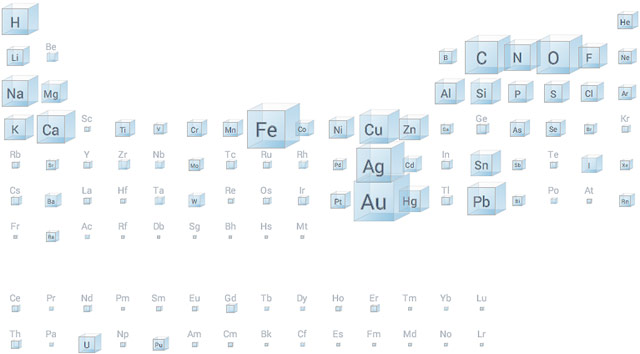
If you’ve ever wondered why the periodic table is shaped the way it is, click on “electrons” under “Shape” and pay attention to the number of electrons in the outer shells in each column of elements. Amazingly, when Dmitri Mendeleev and German chemist Julius Meyer published the first periodic tables in 1869/1870, the elements were organized only by atomic weights and chemical properties; they didn’t know what an electron was and certainly weren’t aware of quantum shells of electrons. (via @djacobs)
This Frank Rich interview with Chris Rock is fantastic, full of keen comedic, political, and sociological insights from Rock.
Q: What do you think of how he’s done? Here we are in the last two years of his presidency, and there’s a sense among his supporters of disappointment, that he’s disengaged.
A: I’m trying to figure out the right analogy. Everybody wanted Michael Jordan, right? We got Shaq. That’s not a disappointment. You know what I mean? We got Charles Barkley. It’s still a Hall of Fame career. The president should be graded on jobs and peace, and the other stuff is debatable. Do more people have jobs, and is there more peace? I guess there’s a little more peace. Not as much peace as we’d like, but I mean, that’s kind of the gig. I don’t recall anybody leaving on an up. It’s just that kind of job. I mean, the liberals that are against him feel let down because he’s not Bush. And the thing about George Bush is that the kid revolutionized the presidency. How? He was the first president who only served the people who voted for him. He literally operated like a cable network. You know what I mean?
Q: He pandered to his target audience.
A: He’s the first cable-television president, and the thing liberals don’t like about Obama is that he’s a network guy. He’s kind of Les Moonves. He’s trying to get everybody. And I think he’s figured out, and maybe a little late, that there’s some people he’s never going to get.
And this:
Q: What would you do in Ferguson that a standard reporter wouldn’t?
A: I’d do a special on race, but I’d have no black people.
Q: Well, that would be much more revealing.
A: Yes, that would be an event. Here’s the thing. When we talk about race relations in America or racial progress, it’s all nonsense. There are no race relations. White people were crazy. Now they’re not as crazy. To say that black people have made progress would be to say they deserve what happened to them before.
Q: Right. It’s ridiculous.
A: So, to say Obama is progress is saying that he’s the first black person that is qualified to be president. That’s not black progress. That’s white progress. There’s been black people qualified to be president for hundreds of years. If you saw Tina Turner and Ike having a lovely breakfast over there, would you say their relationship’s improved? Some people would. But a smart person would go, “Oh, he stopped punching her in the face.” It’s not up to her. Ike and Tina Turner’s relationship has nothing to do with Tina Turner. Nothing. It just doesn’t. The question is, you know, my kids are smart, educated, beautiful, polite children. There have been smart, educated, beautiful, polite black children for hundreds of years. The advantage that my children have is that my children are encountering the nicest white people that America has ever produced. Let’s hope America keeps producing nicer white people.
Q: It’s about white people adjusting to a new reality?
A: Owning their actions. Not even their actions. The actions of your dad. Yeah, it’s unfair that you can get judged by something you didn’t do, but it’s also unfair that you can inherit money that you didn’t work for.
Stay Connected